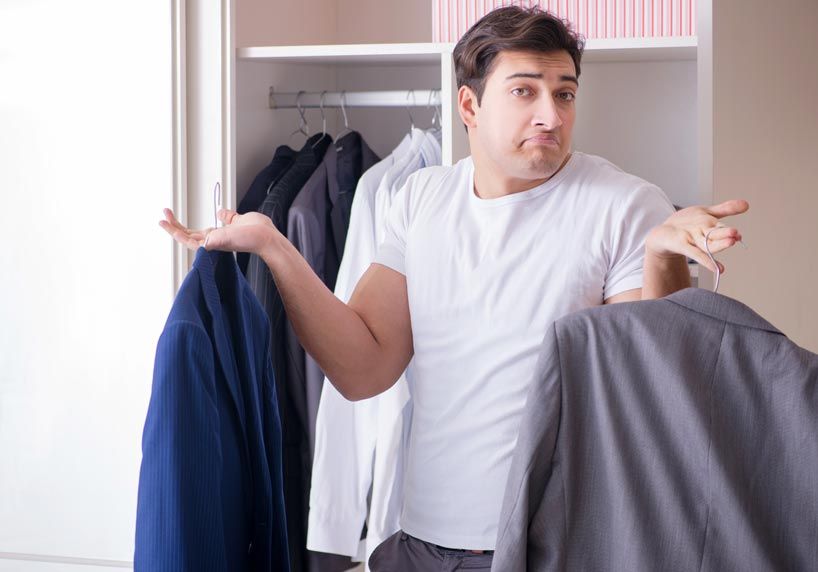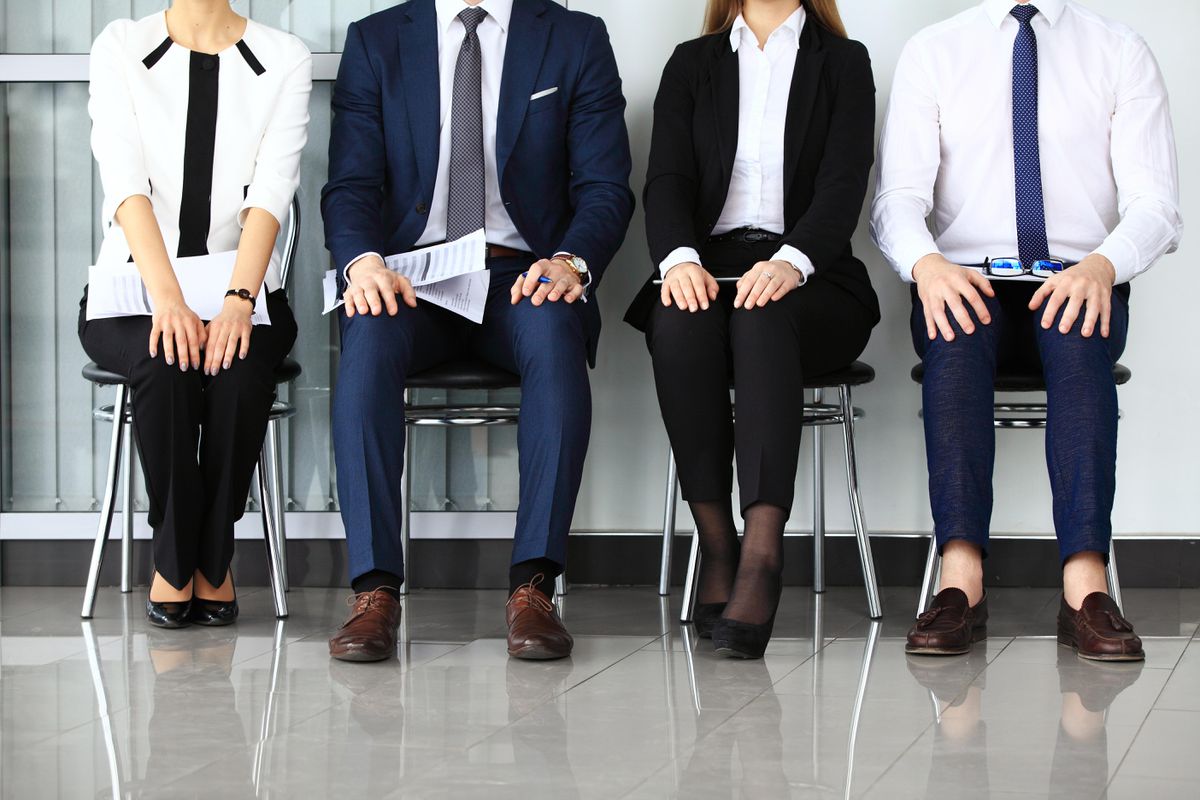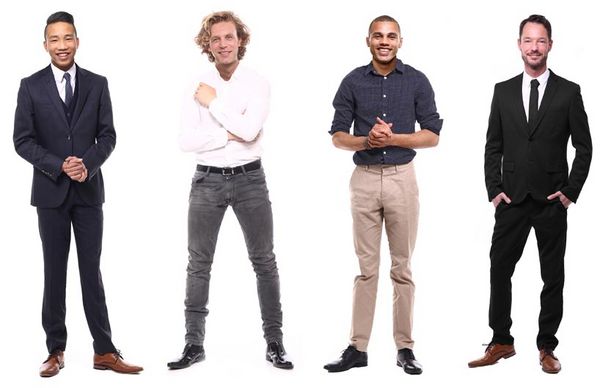Application in IT: the right outfit for the job interview

Which clothes to wear for an interview? Is there a special application outfit, especially for an IT job? Is there a dress code for men, which clothes are trendy for women? We give tips on what you should (not) wear for an application.
Job interview: preparing for clothes
“Clothes make the man” – an old saying. It still applies today, especially on important dates. A job interview as an IT professional is one such event. You should not only score with your specialist knowledge and empathy, but also with an impeccable demeanor.
What does that mean exactly? What’s the best outfit for an interview? How can you convince with clothes in a job interview? Do you have to adhere to a “business etiquette”? How strict are HR managers when it comes to clothes in the relaxed IT world? Are there big differences between men and women? What are absolute no-gos?
We will answer these and other questions in the following paragraphs.
Interview in the IT: What should you wear?
Unfortunately, there is no general answer to this question. Because there is no such thing as _the_ IT job. There are big differences between a junior PHP developer, a senior full-stack developer, a Scrum Master, and an SAP consultant. For example, someone who has a higher position or a lot of customer contact should wear different clothes for an interview than a Growth Hacker.
There are also differences within an industry and the dress code in the respective company. For example, if you apply to a start-up, you wear something different than an interview for an IT job in a bank.
Application outfit: general tips for IT jobs
When choosing your clothes for the interview, keep the following five points in mind:
- The outfit should match the industry and the Companies fit
- The clothing must correspond to your position
- Don’t be “underdressed” and not too “overdressed”
- The clothes should suit you
- The clothes m need to be comfortable
How do you find the right outfit for an application?
It can be a long process. Be careful, do your research, and try a lot.
One thing that will answer your question very well is research: go to your website and social media channels for potential new employers. How do the employees and superiors present themselves here? What clothes are they wearing? Can you see big differences between “normal” employees and superiors? Is there some kind of unifying dress code?
Think about whether the clothes you might have prepared would attract attention – positively or negatively. For example, it doesn’t seem authentic if you show up as a programmer at a software company wearing a “wedding” suit. However, you shouldn’t appear with ripped jeans, worn sneakers, and a T-shirt either.
When you are interviewing for an IT job at a bank or an insurance company, you should never wear too casual clothing drive up. Here it is advisable to really show up with a suit (man) or costume (woman). In a managerial position, men are expected to wear a tie – although it may be uncommon at work later on.
Yes: Don’t overdo it, not even at an old economy company. If you look better than the managing director or the board of directors, it seems strange.
You notice: You have to choose the middle ground between “too casual” and “too chic” for your outfit for the interview. In IT, a style of clothing between smart casual and business attire has become established.

Dress codes: What do the different clothing styles mean?
Smart Casual or Business Attire don’t mean anything to you? Here is a brief overview of the most common clothing styles in business life:
Casual
is to be equated with casual clothing. This does not mean that you wear jogging pants or worn-out sneakers in the office, but rather that you take care of yourself and your appearance. For example, wear nice jeans, good T-shirts (please do not have any noticeable or offensive motifs), and cotton shirts. For women, skirts (not too short), jeans, and tops (not too deep necklines) are to be understood as casual.
Business Casual
represents the more chic variant of casual. Here, too, there is the leisure feel-good factor in the foreground, mixed with a little more style. That means: As a man, you should wear really clean jeans or trousers, (polo) shirts, sweaters, and good, comfortable shoes. Women can also wear trousers, skirts, shirts, blouses or sweaters, combined with matching shoes.
In business casual, the color combinations should not be too colorful, but rather monochrome or muted.
Smart Casual and Business Attire
These clothing styles merge into one another. They are the preliminary stage to the right business formal dress. When it comes to smart casual or business attire, men and women should first pay attention to the colors of their clothes. The trousers or the skirt and the jacket or blazer are black, gray, blue or brown.
We recommend white for the shirt or blouse, it looks friendlier than another dark color. The shoes – leather shoes or pumps – must match the color of the entire outfit, as well as the socks and belt.
With the Smart Casual/Business Attire, you usually don’t wear a tie. This is used for the next dress code.
Business Formal
is the typical business suit in conservative industries and high positions. That means: suit or costume or trouser suit, fine leather shoes or pumps and tie for the man. The colors of your clothes are mainly black, dark blue or gray.
As you can see, there are many levels of dress code for a job interview. Casual is a no-go, business formal could seem too overdone. Smart Casual and Business Attire are your best choices if you are not entirely sure. During our interviews and job placements, we have found that most male IT people go to personal introductions with leather shoes, dark trousers, a shirt, and no jacket.
Interview and clothing: further tips
You should never look at your clothes for an interview in isolation from the “rest”. That means:
- Do you have tattoos? Try to cover them up.
- Wearing piercings should also be avoided in a casual company.
- Women should avoid eye-catching jewelry such as large chains, rings, and the like.
- Pay attention to your hairstyle. For example, if you have long hair as a man, tie it into a nice braid. And what goes without saying: Your hair has to be washed and groomed!
- Personal hygiene is an important point. The best outfit is useless if you smell or smell like the last shower was a few days ago.
- It is normal for the body to go a little crazy in the nervousness of a job interview and, for example, exude more sweat than usual. Therefore, use a deodorant to prevent the unpleasant smell of sweat. You may also apply some perfume. But don’t overdo it! Perfume clouds are repulsive, as is the excessive use of aftershave.
- Another topic especially for men: Beards are okay, but they should be well-groomed like your hairstyle. Better to shave off a three-day beard. Otherwise, it looks like you haven’t taken enough time to groom yourself – which calls into question the seriousness of your application.
- Women should wear make-up. However, only subtle, not too flashy or colorful. Rely on subtle color tones that match your application outfit.
- Some men think you need to spice up your smart casual or business attire look by wearing brightly colored ties or colored socks, for example. Yes, some people may wear this style of clothing, but the following applies to a job interview: no experiments! Make sure not to be too conspicuous or out of the ordinary.
- Note the color psychology! Conspicuous tones such as light blue, green, yellow, or red have subliminal messages. You may appear aggressive or sexually attractive. That is why it is advisable to use subtle colors for all clothing and accessories.
Clothing for the interview: the no-gos in the overview
The following “style sins” should be So when choosing your job suit, don’t make:
- too casual, for example, old T-shirts and “scratched” ones ”Jeans
- worn-out sneakers or high heels
- dress colorful and striking
- Leather clothes (except shoes)
- short pants or too short skirts – not even in midsummer!
- a dress that is too provocative, for example, a deep neckline (women) or an overly open hat MD (men)
- Men: tailcoat, bow tie, or pocket square
- Women: cocktail dresses or a dress like at an opera ball
- Inappropriate lengths: flood trousers or ties that are too long
- Belts and shoes that do not match in color
- too figure-hugging or too loose clothing
- loose hair, scented cloud, and piercings
What to wear? Are you unsure now?
Finally, we advise you:
- Find out about the dress code well in advance that could match your interview. You may wear completely different clothes at your interview appointments in different companies > Get advice from friends, acquaintances, and the sellers in fashion stores.
- Ask the company’s HR department or a Recruiters like Ratbacher. These contacts know best what your clothes should look like at the interview.
- Try on your application outfit extensively at home. Walkthrough your apartment, sit down, play through the conversation, pose in front of the mirror. Do you like your performance? Does everything fit together, do you feel good?

